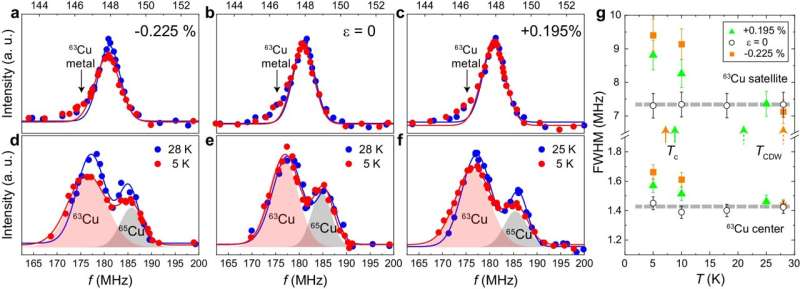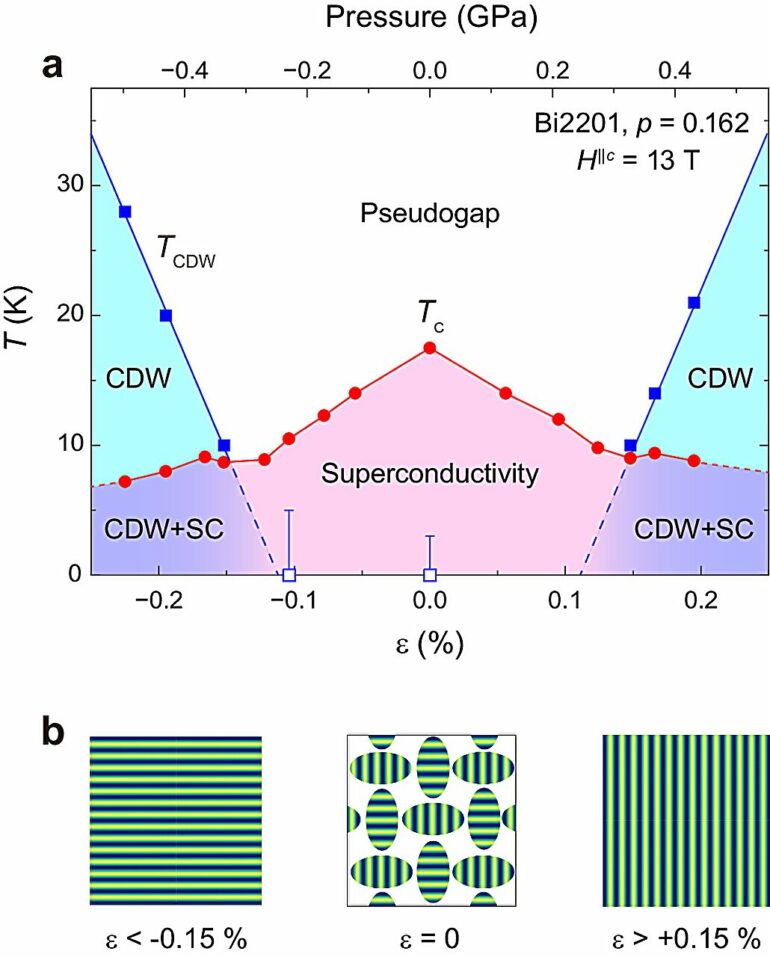Superconductors are materials that can conduct electricity with zero resistance when cooled to a certain temperature, called the critical temperature. They have applications in many fields, including power grids, maglev trains, and medical imaging. High-temperature superconductors, which have critical temperatures higher than normal superconductors have significant potential for advancing these technologies. However, the mechanisms behind their superconductivity remain unclear.
Copper oxides or cuprates, a class of high-temperature superconductors, exhibit superconductivity when electrons and holes (vacant spaces left behind by electrons) are introduced into their crystal structure through a process called doping. Interestingly, in the low-doped state, with less-than-optimal electrons required for superconductivity, a pseudogap—a partial gap in the electronic structure—opens. This pseudogap is considered a potential factor in the origin of superconductivity in these materials.
Additionally, previous studies have revealed a long-range charge density wave (CDW) order, in the low-doped regime of cuprates that breaks the crystal symmetry of the copper oxide (CuO2) plane. CDW is a repeating wave-like pattern of electrons that affects the material’s conductivity. This symmetry breaking is significant as superconductivity has been known to arise inside or near symmetry-broken states.
Moreover, in the bismuth-based cuprate superconductor, Bi2Sr2-xLaxCuO6+δ (Bi2201), it has been shown that strong magnetic fields can induce a long-range symmetry-breaking CDW order. Despite extensive research, the exact role of these phenomena in the occurrence of superconductivity in cuprates is still not known.
In a new study, a team of researchers led by Associate Professor Shinji Kawasaki from the Department of Physics at Okayama University, Japan investigated the origin of high-temperature superconductivity in the pseudogap state of cuprates using a novel approach.
Prof. Kawasaki explains, “In this study, we have discovered the existence of a long-range CDW order in the optimally doped Bi2201, induced by tensile-compressive strain applied by a novel piezo-driven uniaxial strain cell, which deliberately breaks crystal symmetry of the CuO2 plane.”
Their findings were published in the journal Nature Communications on June 14, 2024. The team included Ms. Nao Tsukuda and Professor Guo-qing Zheng, also from Okayama University, and Dr. Chengtian Lin from Max-Planck-Institut fur Festkorperforschung, Germany.

Evidence for a strain-induced long-range charge order at TCDW. © Nature Communications (2024). DOI: 10.1038/s41467-024-49225-w
The researchers used nuclear magnetic resonance (NMR) technique to observe the changes in the electronic structure of the optimally doped Bi2201 superconductor as uniaxial compressive and tensile strains were applied to the material. The results revealed that when the strain exceeded 0.15%, the material underwent a significant transformation, with the short-range CDW order transitioning into a long-range CDW order.
Furthermore, increasing strain suppressed superconductivity while enhancing CDW order, indicating that both superconductivity and long-range CDW can coexist. These results suggest that a hidden long-range CDW order, not limited to the low-doped regime, exists in the pseudogap state of cuprates, which becomes apparent under strain.
“This finding challenges the conventional belief that magnetism is the primary driver in copper oxides and provides valuable insights for constructing theoretical models of superconductivity,” says Prof. Kawasaki.
Highlighting the potential applications of this study, he adds, “The findings of this study hold immense promise for elucidating the underlying mechanisms of high-temperature superconductivity, paving the way for the development of more practical superconducting materials. High temperature superconductors hold great potential for lossless power transmission and storage, contributing significantly to energy conservation and the pursuit of carbon neutrality. Furthermore, the application of superconductors in MRI technology has the potential to reduce costs and make advanced medical imaging more accessible.”
Overall, this study marks a significant step towards understanding the origin of high-temperature superconductivity, highlighting the importance of uniaxial strain as a valuable tool for understanding superconductivity in other similar superconductors.
More information:
Shinji Kawasaki et al, Strain-induced long-range charge-density wave order in the optimally doped Bi2Sr2−xLaxCuO6 superconductor, Nature Communications (2024). DOI: 10.1038/s41467-024-49225-w
Provided by
Okayama University
Citation:
Understanding the origin of superconductivity in high-temperature copper oxide superconductors (2024, July 11)



